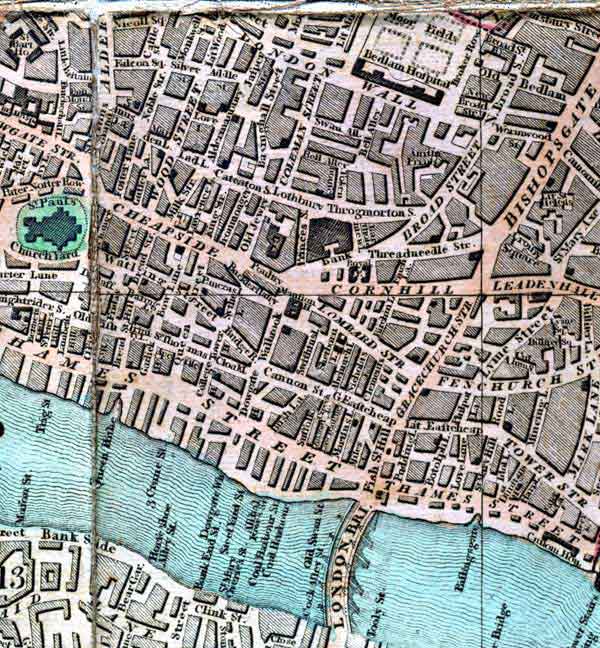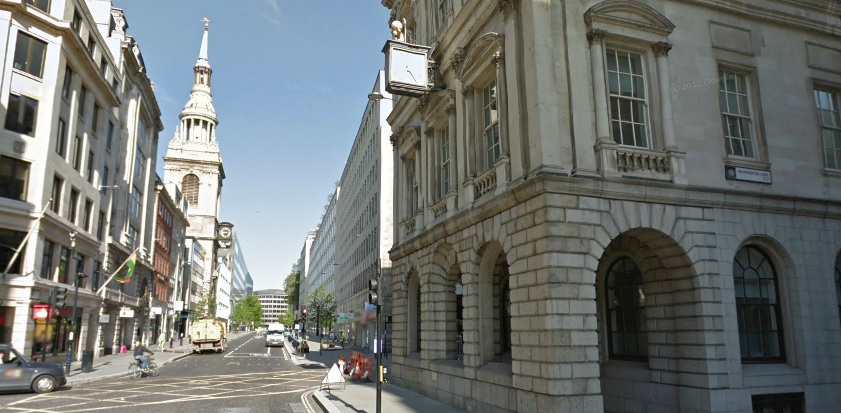Cheapside
51.5141 - 0.0937Koordinaten: 51 ° 30 ' 51 " N, 0 ° 5' 37 " W
Cheapside is a street in the City of London. It starts in the west to the Newgate Street and ends in the east, including the portion Poultry at the junction of Queen Victoria Street, Cornhill and King William Street. In the east, the stretch of road meets at the London Underground station on the bank of the Bank of England building.
History
The section of road Poultry, which translates ' poultry ' means already indicated to the traditional role of the street as a marketplace. The name means Cheapside marketplace; derived from the Old English term ceapan. In the Middle Ages were also roads that indicate with names like Honey Lane or Milk Street on trading venues, away from her. Other cities in the UK have called Cheapside streets, such as: Ascot, Barnsley, Birmingham, Bradford, Brighton, Bristol, Derby, Halifax, Lancaster, Leicester, Liverpool, Luton, Manchester, Nottingham and Reading.
The poet John Milton was born in Bread Street on the edge of Cheapside. Geoffrey Chaucer grew up on the edge of Cheapside and plays in his works occasionally on this area.
The road was on the way from the Tower of London to Westminster and was a part of the path of royal processions.
1912 was found in Cheapside in a basement of one of the most important treasures of Britain, the Cheapside Hoard. It includes about 600 pieces of jewelry and gems, mostly worked in the 17th century.
Structures
The area around Cheapside was in air raids on London in 1940 largely destroyed and rebuilt in the 50s and 60s of the 20th century. The most important building in the Cheapside is the church of St Mary-le -Bow.
Swell
- William Toone: A Glossary and Etymological Dictionary: Of Obsolete and Uncommon Words, Bennett, London, 1834.
- D. Williamson: Kings and Queens of Britain, Salem House, 1986 ISBN 0-88162-213-3.
- Street in London
- Transport structure in the City of London









